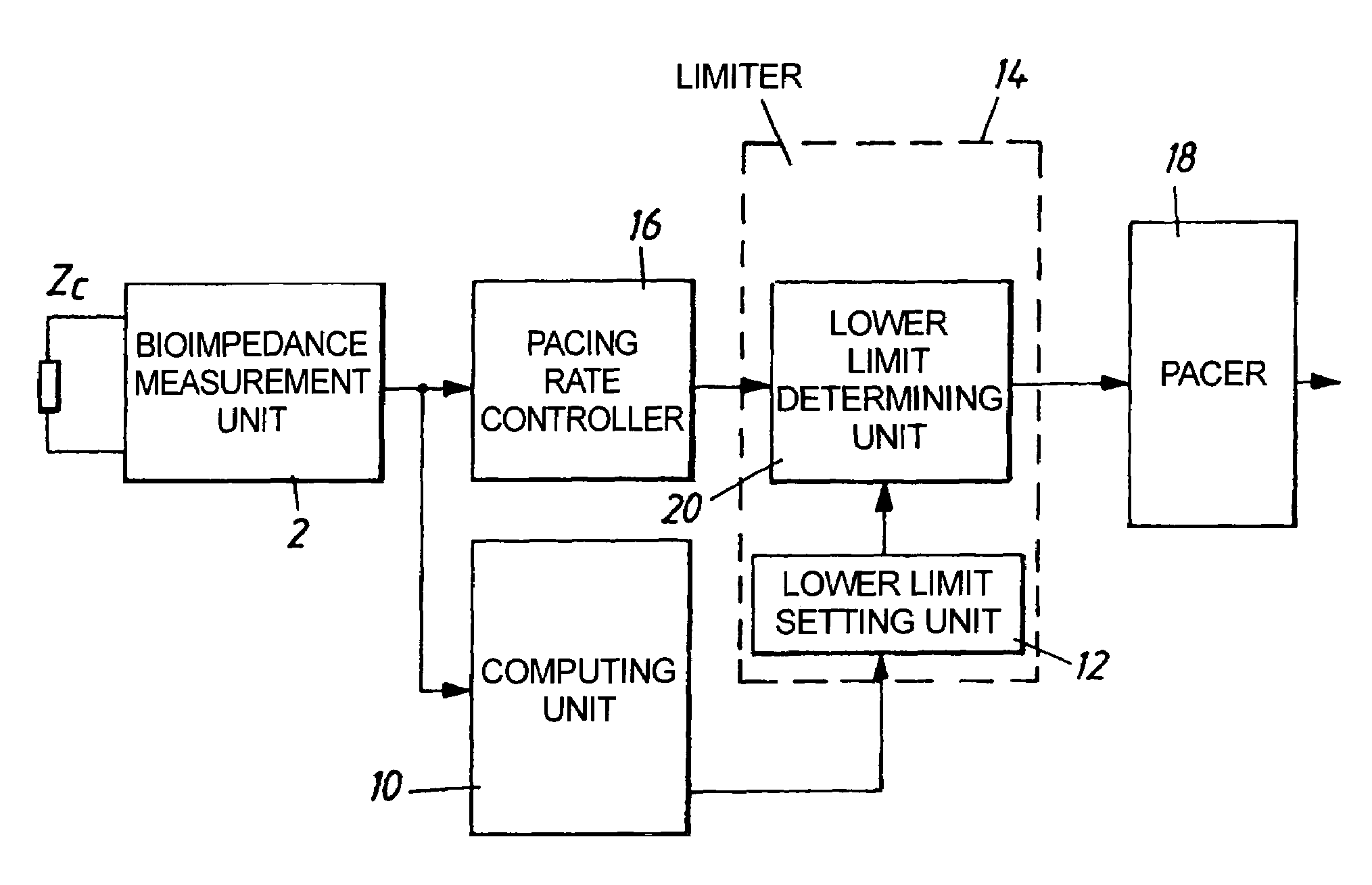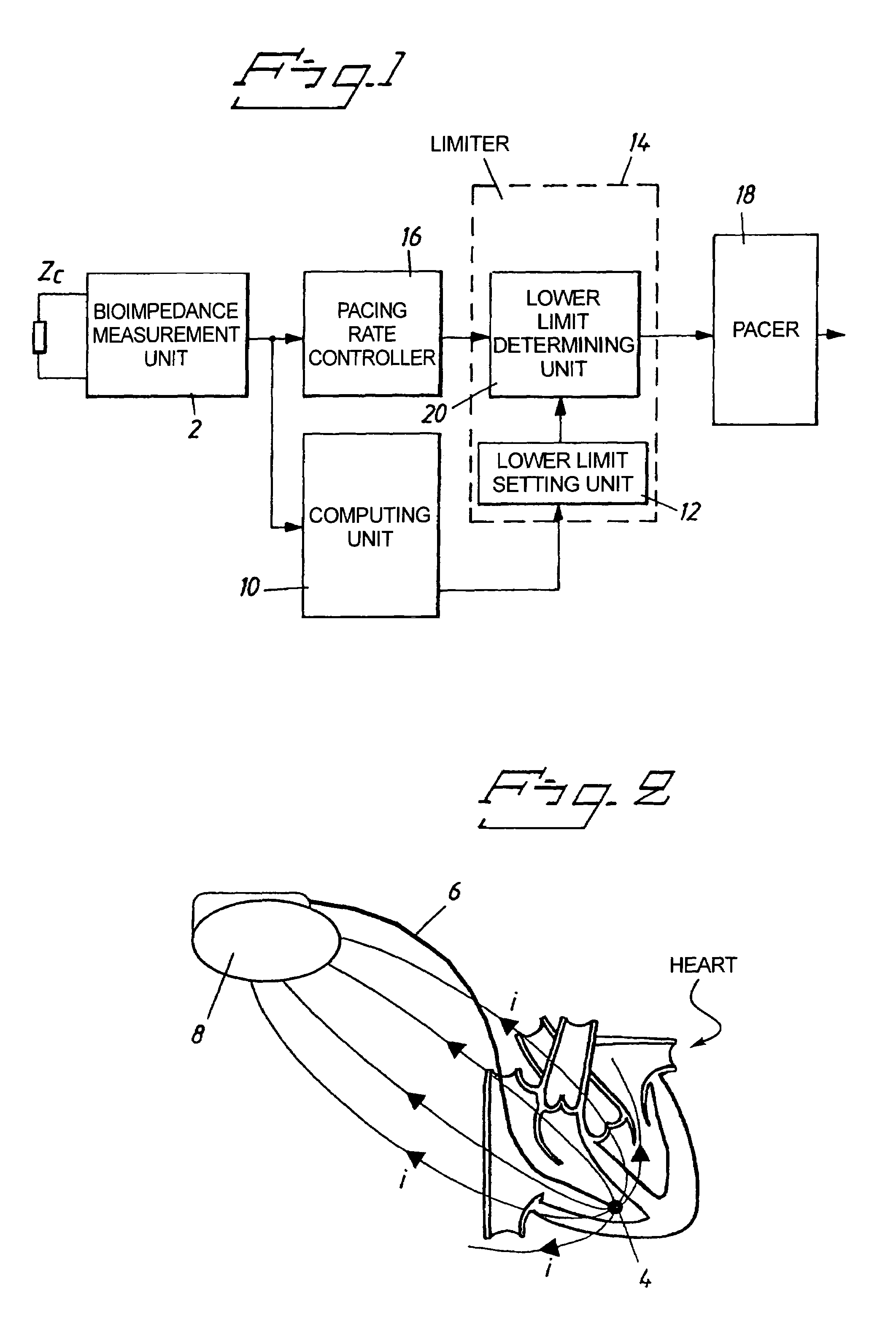Rate adaptive pacemaker using impedance measurements and stroke volume calculations
a rate adaptive pacemaker and impedance measurement technology, applied in the field of rate adaptive pacemakers, can solve the problems of heart failure, lack of oxygen supply to the myocardium, and inability to meet the physiological needs of the patient's organism, and achieve the effect of pacing ra
- Summary
- Abstract
- Description
- Claims
- Application Information
AI Technical Summary
Benefits of technology
Problems solved by technology
Method used
Image
Examples
Embodiment Construction
[0015]To avoid the current cardiac output CO
CO=SV×HR (5)
becomes lower than the rest state cardiac output COrest the pacing rate must be above a lower pacing rate limit given by
lower pacing rate limit=(Corest) / (SV) (6)
and since
COrest=HRrest×Svrest (7)
lower pacing rate limit=(HRrest)×(Svrest / SV) (8)
[0016]In addition the maximum value of the stroke volume must be limited, i.e.
SV<L×Svrest (9)
[0017]Thus, the following two conditions must be fulfilled simultaneously for insuring a physiologically well founded heart work management at low work loads.
Pacing rate limit>(HRrest)×(Svrest / SV) (10)
SV / SVrest<L (11)
where L is a constant typically equal to a value of 1.2 to 1.5, depending on the health of the patient's myocardium.
[0018]Thus the lower pacing rate limit is continuously automatically calculated from the measured actual stroke volume SV and known values of SVrest, HRrest and the constant L. The actual stroke volume can be determined from e.g. bioimpedance measurements as w...
PUM
 Login to View More
Login to View More Abstract
Description
Claims
Application Information
 Login to View More
Login to View More - R&D
- Intellectual Property
- Life Sciences
- Materials
- Tech Scout
- Unparalleled Data Quality
- Higher Quality Content
- 60% Fewer Hallucinations
Browse by: Latest US Patents, China's latest patents, Technical Efficacy Thesaurus, Application Domain, Technology Topic, Popular Technical Reports.
© 2025 PatSnap. All rights reserved.Legal|Privacy policy|Modern Slavery Act Transparency Statement|Sitemap|About US| Contact US: help@patsnap.com


